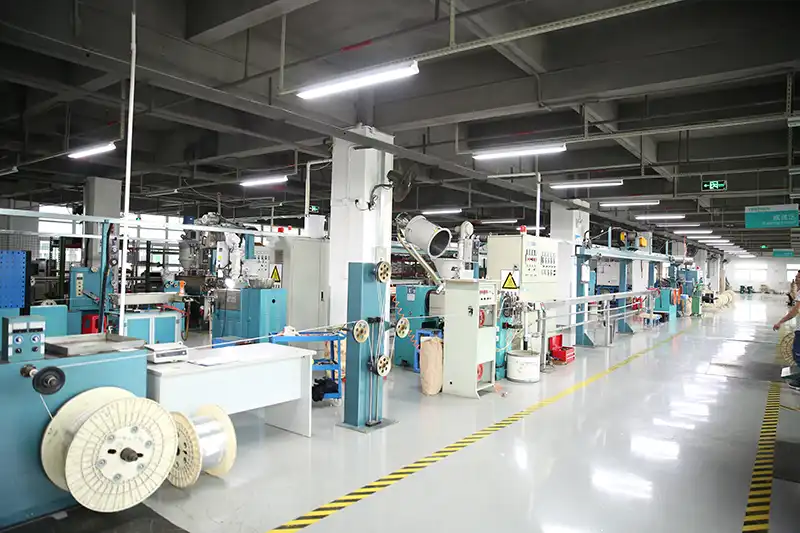Automotive wiring harnesses are key components in modern vehicles, responsible for connecting various electrical and electronic systems. It ensures seamless transmission of power and signals, playing a key role in the overall performance, safety and efficiency of the vehicle. As a professional automotive wiring harness manufacturer, we are often asked about the raw materials required to make these complex networks. This article takes a detailed look at the key raw materials used to produce automotive wiring harnesses, highlighting their importance and specific properties.
- Conductors-the backbone of the wiring harness
1.1 Copper
Copper is the main raw material used for conductors in automotive wiring harnesses. Its excellent electrical conductivity, thermal stability, flexibility and tensile strength make it an ideal choice to ensure reliable performance. The purity of the copper used is usually high to minimize resistive losses and enhance signal integrity.
1.2 Aluminum
Due to its lightweight, aluminium is increasingly used as a conductor material. Although aluminium conductors have lower electrical conductivity than copper, to make up for this difference, aluminium conductors have a larger cross-sectional area. This material is particularly valued in applications where lightweight is critical, such as electric vehicles.

2. Insulation materials that protect conductors
2.1 Polyvinyl chloride(PVC)
PVC is one of the most commonly used insulation materials because it is cost-effective, flexible, and has adequate heat resistance. It provides good protection against chemicals, oils, and abrasion, making it suitable for standard automotive applications.
2.2 Cross-linked polyethylene(XLPE)
For high-temperature environments, XLPE is an excellent insulator. This material can withstand prolonged exposure to high temperatures and harsh chemicals, ensuring strong performance in extreme conditions. Its excellent mechanical properties also provide enhanced durability.
2.3 Fluoropolymer insulation materials(PTFE,FEP,etc.)
Fluoropolymers, such as PTFE(polytetrafluoroethylene)and FEP(fluorinated ethylene propylene), have excellent heat and chemical resistance and low friction. These materials are used in highly specialized applications that require maximum durability and performance.
3. Shielding materials that ensure signal integrity
3.1 Metallic braids and foils
Shielding is essential to prevent electromagnetic interference(EMI)that can degrade signal quality. Metal braids and foils, usually made of copper or aluminium, are used to create an EMI shield around conductors. This ensures the integrity and clarity of the signals transmitted through the harness.
3.2 Conductive Polymers
Some advanced harnesses are shielded with conductive polymers. These materials provide flexibility and ease of installation while still providing substantial protection against electromagnetic interference.
4. Connectors and Terminal Interface Elements
4.1 Metal Connectors
Connectors, usually made of copper alloys such as brass or phosphor bronze, are essential for establishing a secure electrical connection. They are usually tin-plated to prevent corrosion and improve conductivity. The design and materials of these connectors ensure durability and reliability under a variety of operating conditions.
4.2 Plastic Housings
Plastic materials such as nylon or polycarbonate are used to manufacture the housings of connectors. These materials offer excellent heat resistance, mechanical strength, and protection from environmental factors such as moisture and dust. Advanced polymer composites can also be used to enhance performance.
5. Protective Tubing and Conduit
5.1 Corrugated Tubing
Corrugated tubing made of materials such as polyethene or polypropylene provides mechanical protection for the harness. It protects the wires from physical damage, environmental exposure, and abrasion caused by movement or vibration.
5.2 Heat Shrink Tubing
Heat shrink tubing is used for insulation, protection, and strain relief. Made from materials such as polyolefin, this tubing shrinks when heated to form a tight protective layer around the wires, ensuring long-term durability and resistance to moisture and chemicals.

The raw materials used in automotive wiring harnesses are carefully selected based on their electrical, thermal, and mechanical properties. From the highly conductive copper and aluminium used in the conductors to the rugged insulation, shielding, and protection materials, each component is carefully selected to meet the stringent requirements of the automotive industry.
As a leading automotive wiring harness manufacturer, TESTECK is committed to using high-quality raw materials and state-of-the-art manufacturing processes to deliver products that excel in performance, safety, and durability. Our expertise and dedication to innovation ensure that our wiring harnesses meet the highest standards and support technological advancements in the automotive industry.
TESTECK-Your trusted source for high-quality automotive wiring harness solutions.



